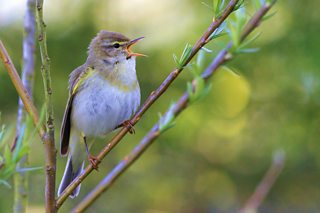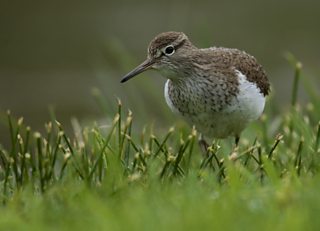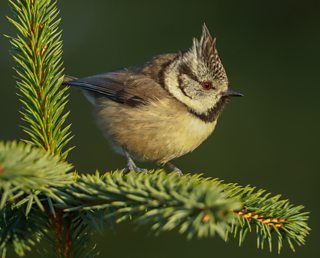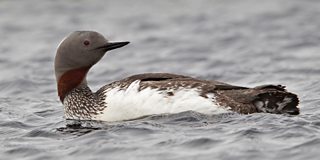Springtime in the Cairngorms brings a very special dawn chorus of migrant birds. Willow warblers seem to sing from every birch clump and tree pipits perform their parachute song-flight over forest clearings.

Willow warblers seem to sing from every birch clump. Photo by George Wootton via Flickr.

Redstarts flash their orange tails among the pines. Photo by Tom Lee via Flickr.

Along the streams and loch shores, common sandpipers whistle high-pitched courtship calls. Photo by Ian Mc Farlane via Flickr
Resident birds are also in the middle of their breeding season and the trees are alive with twittering siskins and coal tits. In the half-light of early morning black grouse gather at traditional sites known as leks, the males wheezing and bubbling like coffee machines to impress the females, known as greyhens. Listen carefully and you can hear crested tits purring among the pine needles.

Crested tits are certainly among the most iconic animals of the Caledonian pinewoods. Photo by Wayne Havenhand via Flickr
But the icon of these ancient pinewoods is the capercaillie, whose name comes from the Gaelic for “horse of the woods”. The Cairngorms are the British headquarters of these huge, turkey-sized grouse, and anyone lucky enough to hear their unique courtship ritual will understand how their name came about. Male capercaillies produce a bizarre sound like a neighing horse, followed by a cork-popping noise.
From the lochs red-throated divers emit strange wailing cries, or cackle like geese as they fly between feeding sites. It is a soundscape entirely unique in our islands.

Listen for the strange calls of red-throated divers around the lochs of the Highlands. Photo by Clare Ward via Flickr
